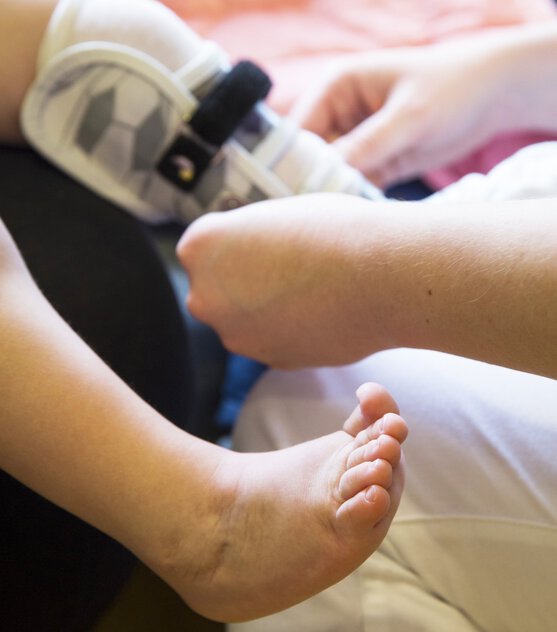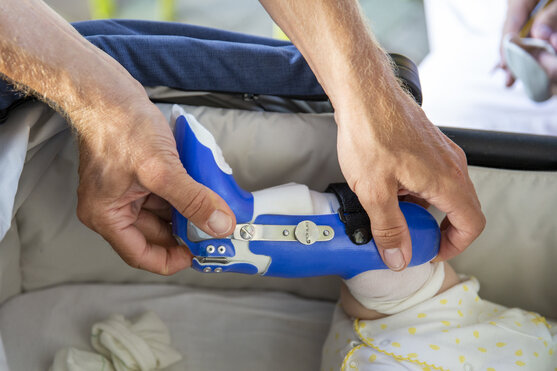Complex foot deformity
Club foot

Idiopathic club foot
Idiopathic (congenital) club footis one of the most common congenital foot malpositions in babies. This is a complex deformity that is associated with bony changes, joint deformities, muscular imbalance and limited mobility of the foot. In principle, four malpositions occur in combination: a dropped foot position, an inward rotation of the foot, a high arch position and a pigeon toe position. In addition, the Achilles tendon is shortened in the club foot.
Neurogenic club foot
The neurogenic (acquired) club foot is usually caused by a disorder of the nerve supply. This may result from injury or infection.
Treatment options with orthoses
The treatment of club foot can be both conservative and operative. However, a complex operation can only be considered for severe recurrent club foot. Ponseti therapy has long been considered the "gold standard." As part of the treatment according to Ponseti, the club feet of the infant are gradually corrected with special plaster dressings. In the further course of treatment, conservative therapy with physiotherapists and orthosis is sought.
POHLIG has developed and patented a completely new approach to orthosis design for the treatment of club foot. We offer a finely-tuned concept tailored to the needs of children and the medical requirements of specialist doctors.
Of course, we can also provide affected babies with the well-known Ponseti rail, which holds the foot in external rotation by means of shoes mounted on a rail.
Often, however, children do not accept the binding of the legs well, so that the splint cannot be worn consistently. However, a reduction in wearing time can have a negative effect on therapy.


In this case, we offer positional heels that maintain the optimum correction even without the linking of the legs. The child’s foot is guided in a leather-lined inner boot (liner). The exact setting of both the lower leg and the side of the knee provides a very good effect.
As soon as the children start standing up, an orthosis with joints is used to support verticalization and not hinder standing and walking.
In advanced treatment, and to learn to go without it, the circumference of the orthosis can be reduced so that only the lower part of the lower leg and the foot of the child are held in the orthosis.

An orthosis is used to stabilize, relieve, immobilize, guide or correct limbs. This prevents or corrects incorrect postures and strains.
When choosing orthotic shoes, it is important for the combination of orthotic and shoe to be right for the purpose and for the desired effect of the treatment to be achieved. There are numerous models with different designs.

